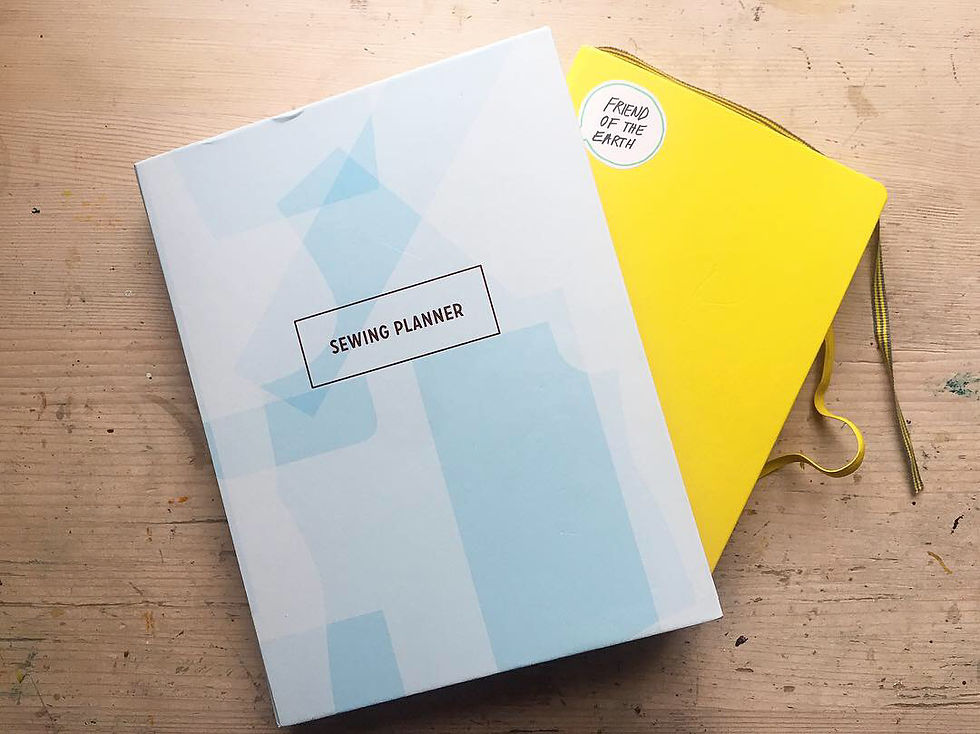Draw string bread bag
- Cora
- Aug 8, 2019
- 3 min read
Updated: Sep 16, 2019

David's been baking some delicious Rye bread recently, so we've been getting through a couple of loaves a week. If you have a bread machine, it's so easy and cheap to make bread, and it doesn't have any of the preservatives of shop-bought plastic packaged sliced bread. I've been wrapping it up in a tea towel and putting it in the bread bin. I don't know why I didn't think of making a bread bag sooner, it's hardly a new invention, but when I saw @notacheesews' post on instagram with her bread bag I wanted to make my own ASAP. I didn't have any nice, soft un-dyed cotton though, but then I saw linen is apparently a really good fibre for keeping bread crisp and fresh.
I've got lots of leftover linen scraps, which I'm planning to patchwork together to make some willow tanks. I chose some cornflower blue linen that I used to make my Claudia Dress (Tessuti) last year. I watched this great video on youtube on how to french seam a draw string bag. I wanted it french seamed so that crumbs wouldn't get all in the zigzag stitching of my finished seams.
This is a step by step of what I did:
1. Cutting
Measure what size you want- this will be determined by the size loaf you have and what scraps you have too.
Fold the fabric in half so that the fold forms the bottom of the bag. I had a scrap that was 15.5 inches wide from the fold to the selvedge, so I used that length. The width I chose was 11 inches.

2. Seams
With fabric folded in half, sew both the long edges wrong sides together. This is the first step of your french seam (I use a 05.cm seam allowance so I don't trim it down).
You must leave a gap at the top for the drawstring channel. How wide you want the channel to be will determine the gap you will leave. I left two inches, and it gave me a channel width of just under 2cm. (Sorry for the switching between metric and imperial, I measured the bag in imperial, but I'm a metric girl and I'm so bad at knowing how to say fractions of an inch so it's much easier for me to talk about cm).

Once sewn both sides- turn the bag inside out, turn the corners out and press your seams flat so that you can do french seam step 2.
Sew exactly the same seam again, stopping/starting 2 inches from the top. This time use a wider SA (I use the width of one side of my machine foot to guide me on this- easy peasy).


Turn the bag inside out (the right side), turn corners and press.
3. Finishing the edge of the seam at the top
The top of your bag will look like this:

You now want to do some folding to enclose the raw edge of that extra bit of seam in order for us to then make the channel.
See this little fold from your french seam:

You want to fold the edge of the bag to be in line with rest of the edge, and then fold the raw edge back in on itself so that it is enclosed. You're essentially making a french seam by folding it. You want to fold it to look like this:

Do this with all four sides, finger press the linen to get the right shape then iron it. Snip any fraying bits of linen.
4. Sewing the channel
Open the flaps so it looks like this:

Press both raw edges under about 1cm:

Press each edge over again, to meet where side seam starts at the side:

Make sure all the folds are nicely tucked into the channel:

Sew one line of stitching along this fold, keeping the small edge open so that you can put your string through. Tie off your thread ends:

5. Insert drawstring
Choose whatever kind of string you'd like, make a tie from the same fabric, or use anything you have in your stash. You want 2 pieces of string, I measured mine by laying them on the bag, fold them in half as if they were in the channel so you can see how long it needs to be. Cut it a couple of inches longer than the edge of the bag:

Thread your first string through. Attach a safety pin to help you pull it along inside. Once through one channel, go into the next channel in the opposite direction and all the way through:

Now repeat with the other piece of string but in the opposite direction, so that you have a loop at each end and ties coming out each end. Like so:

Cut off the frayed ends, tie each string with a little knot to keep it from disappearing into the channel.

Put your loaf in, and you're done!




Comments